Author: Rachel
This week I’m going to tell the story of another site, and in some ways it might begin to sound a bit familiar to regular readers. I am going to talk about a site we refer to as ‘Cottier’s Field, Bishopscourt Farm’. In 1953 the farmer at Bischopscourt Farm, Mr Ellis Corlett, was ploughing his field and the plough struck the remains of two cist graves. Mr Corlett contacted the museum about the cists and Basil Megaw, who was then the Director of the Manx Museum, excavated the site. This now familiar tale of a farmer’s plough striking a Bronze Age burial cist illustrates how it is that we often come to find prehistoric burial sites. Thousands of years of land use, including ploughing and farming, erode away the soil that makes up the mound covering a burial. Sometimes we know about these mounds as they may have been recorded by the OS mappers, antiquarians or other interested people but in this case, the plough striking the cist was the first anyone in recorded memory knew of the site.
Again there is some similarity in the way the details of this excavation were handed down to us, the site was excavated in 1957 but it wasn’t until the 1990s that the archive of the site was sent to the Centre for Manx Studies. Dr Jenny Woodcock studied the material and published a summary of the site, the excavations, and its significance in 1999. The papers from Basil Megaw’s archive included plans and section drawings, some photographs, some notes, and a list of ten unanswered questions Megaw has posed himself following the excavation! Jenny’s work untangling the excavation records means that we have a good understanding of the site.
So what do we know about the burial? There were two cists found at the centre of this mound. Cist A, like many of the cists we know about on the island, was made of Manx Group slate. The cist was quite small, about 75cm long and 40cm wide. Jenny Woodcock suggests that fragments of hardened clay retained with the other finds in the museum indicate that the inside of the cist had been lined with clay. It seems the mourners wanted to create a lining for the stone cist, this practice happens elsewhere in Britain and whilst we can’t ever know why exactly the mourners chose to do it we might think about it as a way of sealing the cist more thoroughly, perhaps to keep something in (or maybe out?). Interestingly, the records suggest some of the clay was yellow in colour but other bits were more blue, perhaps this was a form of decoration? The second cist, Cist B, is a bit bigger, measuring 1m long by 75cm wide. The cist was about 4m away from the first cist but still within the same mound. Again the cist was made from Manx Group slate and also lined with clay – the records suggest that at the corners of the cist the clay sealing was red.
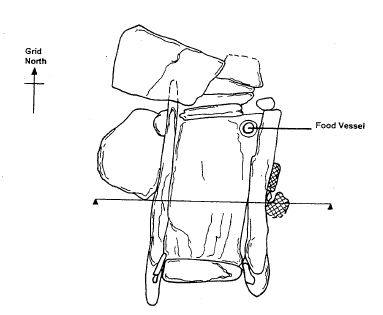
Cist B, the bigger cist, contained a skeleton. The deceased has been laid on their right hand side with their head placed in the north-east corner of the cist. We call this kind of burial a crouched inhumation meaning that the body was quite tightly squeezed into the cist – imagine putting a body into a 1m by 75cm box – you have to squash it a bit to fit it in. Cist A contained a cremation burial, the notes and drawings show that the cremated remains were mostly concentrated in the north-east corner of this cist. From what we can tell these remains were not placed within any kind of container though it may be possible that some kind of organic bag had been used to hold the remains of which the excavators found no trace.
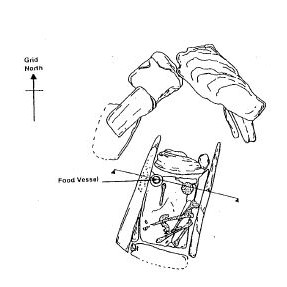
Michelle’s work with the human bones also adds to the story. Her provisional analysis suggests that the inhumation in Cist B is of a man aged 30-40 years. Cremated bones are more difficult to analyse so Michelle cannot be certain but, the remains in Cist A may also be of a man, but a younger man aged 16-24years.
Both of the burials were accompanied by a type of pottery vessel that we refer to as a Food Vessel Bowl. In Cist A the bowl was found upright, empty, and stuck to the clay lining of the cist in the north-east corner near the cremated remains. In Cist B a slightly larger Food Vessel Bowl was found upright, near the skeleton’s mouth. Both the bowls are quite beautiful with intricate decoration on them. Whilst the two Bowls are slightly different in size they are really very similar in terms of decoration, and the way that decoration has been executed: might they have been made by the same person?
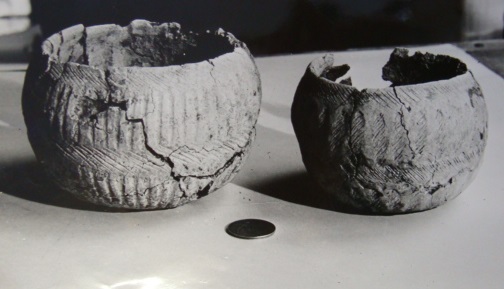
Some of the rest of the evidence about the site is quite confusing. The site was not completely excavated and the archive suggests the site had been disturbed prior to excavation. A hand-made brick was uncovered not far from Cist B in a disturbed area. Other fragments of bone, charcoal, and a single sherd of undecorated pottery were also found outside of the cists during the excavation. Megaw’s notes also make reference to a potential pit that does not appear anywhere in the plans. Further confusion stems from the way that the section drawing for Cist A shows no capstone but a note in the archive suggests the cists (plural) had heavy capstones. The list of questions from Megaw is also interesting – they are questions he couldn’t answer himself after he excavated the site indicating he was still quite confused about what was going on.
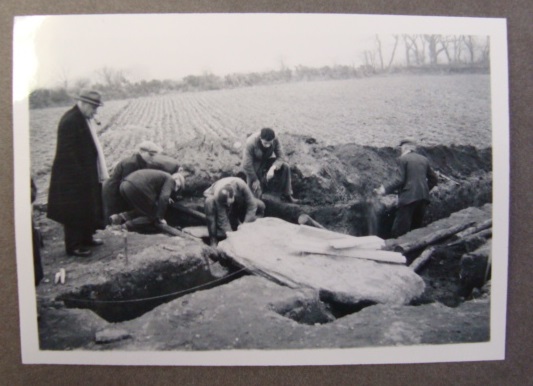
Finding a brick and a disturbed area seems to indicate some later activity at the site – perhaps a farmer dumping some old material? The bits of charcoal, pottery, and bone may well indicate that the site held other burials in addition to the two cists: as we saw last week at ‘The Cronk, Upper Lherghydhoo’ this would not be unusual.
During the 2000s one of the bones from the skeleton in Cist B was dated to 2131-1695cal BC (GU—2698). Later, as part of the research for my PhD I had a sample of the cremated bone from Cist A radiocarbon dated and it produced a date of 2336-2137 cal BC (OxA-27193) (generously funded by Culture Vannin). These two dates together are quite interesting for two reasons. Firstly, the date associated with Cist A is quite early in the date range that we put on Food Vessel Bowls – these Bowls are found across Ireland and Northern Britain and this date helps to confirm that the Isle of Man was part of the new burial pattern associated with these Bowls from an early date – this is indicative of how well connected the island was to places like Ireland, Scotland, and the north of England at this time. Secondly, it helps us to think a bit more about the story of this site. The dates and the records (or more precisely perhaps the lack of detail in the records) allow several possible stories to be told about the site. The two cists could have been built at the same time, to bury two people – perhaps two people who died together? Or maybe two people who were related? Alternatively, it could be that Cist A was constructed earlier than Cist B, meaning a community of mourners chose to bury the second person at the same site (the plans for excavation do not allow us to be confident about the sequence). In both case the differences between the burials are as interesting as the similarities – similar styles of cist construction, cist lining with clay, and pottery vessels – but – very different treatments of the dead bodies.
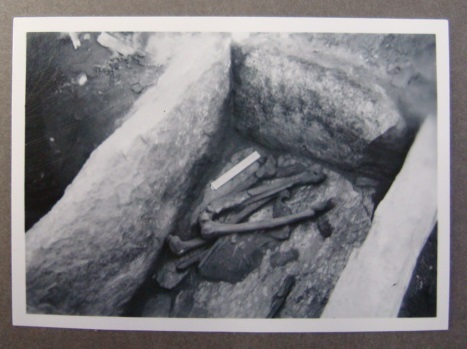
Jenny Woodcock’s work on the site is published under this reference:
Woodcock, J. 1999. The Bronze Age burials from Cottier’s Field, Bishopscourt Farm, Ballaugh. In, Davey, P.J. (ed.). Recent Archaeological Research on the Isle of Man. BAR 278. Oxford: Archaeopress: 99-110.
Neil Wilkin, the curator of the Bronze Age at the British Museum has recently written a great blog all about Food Vessels – check it out here: http://digventures.com/2017/01/site-diary-did-early-bronze-age-brits-bury-their-dead-in-food-vessels/
this is a phenomenally good blog and project, can’t wait to learn more, keep the posts coming is all i can say!!!
LikeLike
Thanks Sabrina! That is really great to hear – we are very glad you are enjoying it!
LikeLike